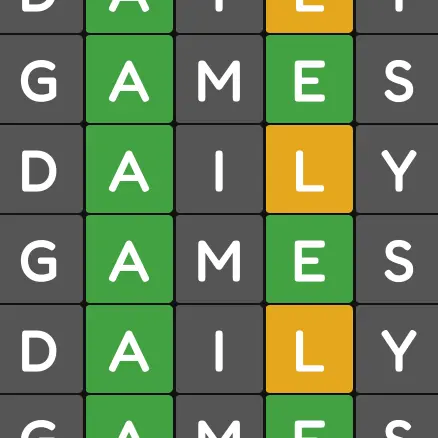Mlem dev here. We’re adding spoiler support in the next update :)
Sjmarf
Hi! I’m a developer for the Mlem iOS client. Join us on !mlemapp@lemmy.ml!
- 0 Posts
- 39 Comments
Mlem dev here! Lemmy has a custom “flavor” of Markdown that is distinct from other social media platforms. Open-source markdown parsers and renderers exist for popular flavors of Markdown (e.g GitHub-flavor), but not for Lemmy-flavor. Most Lemmy clients choose to use an existing GitHub-flavor parser that is close enough to Lemmy’s to be indistinguishable in most cases. Mlem uses swift-markdown-ui to render markdown, which uses cmark-gfm as its parser.
Lemmy’s spoiler format is unique to Lemmy-flavor markdown, so that’s one of the places where use of a third-party markdown parser is noticed by users. Other common parsing errors are subscript and footnotes.
Adding spoiler support is not particularly easy, unfortunately. You can’t really apply spoiler-parsing logic on-top of another markdown parser - it has to be integrated into the parser itself. This is because the app needs to ignore spoiler markdown in certain situations, such as inside of a code block. The only good option is to write a custom markdown parser from scratch, or modify an existing markdown parser to support Lemmy’s markdown dialect. Both options can be difficult for developers for several reasons:
- cmark-gfm is written in C, which the developer of the Lemmy client may not be familiar with.
- If the app is using a third-party renderer, and not just a parser, that renderer also needs to be rewritten to support the new parsing logic.
This takes a significant amount of time for comparatively little value for users, so most client developers didn’t prioritise it.
In an upcoming Mlem version, we’re replacing our markdown parser renderer with a custom one that can render spoilers and subscripts, but we’ve got a way to go before we achieve full parity with Lemmy. If any developers of other apps are using cmark-gfm, you’re welcome to use our code from that repo under the terms of the licence.
Sorry this is kinda long, I hope this answers your question

 2·2 months ago
2·2 months ago

 2·2 months ago
2·2 months agoYeah, it’s rather inconsistent. I opened an issue for it a while ago.

 3·2 months ago
3·2 months agoMlem dev here. It shows strikethrough, but not superscript. Lemmy has got a unique dialect of Markdown - in the current version we’re using an open-source Github-dialect parser, which is close to Lemmy’s dialect but not perfect. In the next update we’ve written a custom parser that handles all of Lemmy’s Markdown elements, including superscript and spoilers.

 5·4 months ago
5·4 months agoNope; we haven’t got one yet. We hope to add one sometime in the future though.

 3·4 months ago
3·4 months agoThat’s what I use in mlem.
Mlem dev here - we added a button for this to both the post editor and comment editor in our 1.3 update.
Post Comment 


 7·6 months ago
7·6 months agoMlem dev here! Admin features aren’t live quite yet, but they should be available as part of an upcoming beta in a couple of weeks or so.
Mlem doesn’t have this option just yet, but we’re adding it the next beta. Memmy and Arctic have had it for a while.
Adding such an option is very easy to do for iOS apps - Apple provides a simple API for it, so we just have to add a settings toggle. I’m not familiar with how it works in Android development, but it may be more complicated.
Mlem dev here! I can’t reproduce this issue at the moment. Do you mind sharing the model of iPad you are using, and iOS version? Does the crash happen with every comment, or seemingly randomly, or only under some condition? Thanks!

 1·7 months ago
1·7 months agoDoes this happen on every comment you post, or just some? I’m not able to reproduce this either yet, unfortunately.

 9·7 months ago
9·7 months agoHey there! We’re aware that the comment-collapse animation is a little jarring; this is something we want to improve in future.
You can simplify the animations used when switching pages and when opening the image viewer by going into System Settings -> Accessibility -> Per-App Settings (right at the bottom) and enabling “Reduce Motion” and “Prefer cross-fade transitions” for Mlem.
Disabling the comment-collapsing animation isn’t yet possible. I’ve opened an issue for this on our GitHub, and will look into disabling it when “Reduce Motion” is enabled 👍
Yep, that’s another way it could be done. We’re hoping to add a text-selecting popup in the next major update, which will make this possible. However, it’s not quite as seamless as having a dedicated “Translate” button that replaces the post/comment content inline, which I’d prefer to use if implementing it proves to be feasible.

 13·8 months ago
13·8 months agoThis would certainly be a useful feature. Unfortunately, Apple does not make their translation API available for us to use, so we’d have to use someone else’s API instead. I haven’t looked too deeply into potential options just yet, but have created an issue here to keep track of the suggestion 👍

 6·8 months ago
6·8 months agoThe Saved feed has moved to the Feeds list, just below “All”, “Local” and “Subscribed”.

 6·8 months ago
6·8 months agoMlem is an open-source project developed by unpaid volunteers. Anyone is welcome to start or stop contributing to Mlem at any time.
The number of people in our development team is the number of people who are passionate enough about the project to spend their free time working on it. We don’t control that number, and we certainly can’t just “expand our dev team” like a company can by employing more developers.
The “crunch” you refer to was during the large influx of users migrating from Reddit. During that time more people (including myself) became interested in the project, and naturally a subset of those people were interested in developing for it. The development team grew because of the increased interest towards the project, not just because we wanted to expand it.
If someone wants to contribute a custom low-level markdown renderer to the project, they’re more than welcome to.







Mlem dev here. You can attach a link to the post directly by clicking the link button in the post editor toolbar then tapping “Paste” (with a link copied to clipboard). We’re aware that this isn’t the most obvious UI, and are improving the design in the next version.